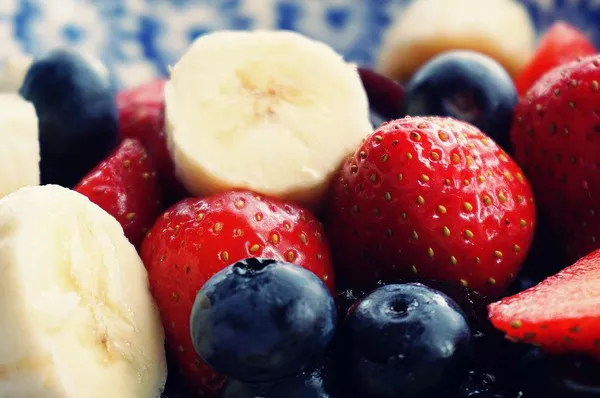Ear piercings, often embraced as a form of self-expression and adornment, can occasionally lead to an unexpected concern: keloids. These raised, sometimes itchy or uncomfortable scars, can form around ear piercings due to an overgrowth of scar tissue. While medical intervention is available, exploring home remedies for keloids on ear piercings provides a natural and proactive approach to addressing this aesthetic and potential discomfort. This article delves into the realm of home remedies, drawing on natural solutions that aim to mitigate keloid formation, enhance healing, and promote overall skin wellness.
Understanding Keloids: Unraveling Scarring on Ear Piercings
Keloids result from an overproduction of collagen during the wound-healing process. They extend beyond the original wound, manifesting as raised, firm, and often red or pink growths. Individuals with a genetic predisposition, darker skin tones, or a history of keloid formation are more prone to developing keloids. Ear Piercing Impact: Ear piercings, due to their potential to disrupt the skin’s integrity, can trigger keloid formation in susceptible individuals.
Home Remedies for Keloids on Ear Piercings: A Holistic Approach
While consulting a healthcare professional is recommended for severe cases, home remedies offer natural and gentle ways to manage keloids on ear piercings.
1. Aloe Vera: The Soothing Elixir
Aloe vera’s natural anti-inflammatory and wound-healing properties make it a versatile ally in managing keloids. Applying fresh aloe vera gel directly onto the keloid can help soothe irritation, reduce redness, and support the healing process.
2. Tea Tree Oil: Nature’s Antiseptic
Diluted tea tree oil, with its antimicrobial and anti-inflammatory properties, can be applied to keloids to aid in reducing inflammation and preventing infection. However, it’s important to patch-test first to ensure your skin tolerates it.
SEE ALSO: The Efficacy of Essential Oils in Scar Reduction: You Need to Know
3. Lemon Juice: Natural Exfoliation
The natural exfoliating properties of lemon juice, combined with its potential to lighten skin, can be utilized to gently diminish the appearance of keloids. Apply freshly squeezed lemon juice to the area and allow it to sit for a few minutes before rinsing.
SEE ALSO: Can Lemon Remove Pimple Marks? Unveiling the Truth
4. Honey: Healing Elixir
Honey’s antibacterial and wound-healing properties make it a suitable choice for managing keloids. Apply a thin layer of raw honey to the affected area, cover with a clean bandage, and allow it to work its magic.
5. Silicone Sheets: Gentle Compression
Silicone sheets, available in various sizes, can be applied over keloids to exert gentle pressure and help flatten the scar tissue. Consistent use over time may yield visible improvements.
SEE ALSO: The Efficacy of Silicone Gel in Scar Management, According to Science
6. Onion Extract: Nature’s Remedy
Onion extract, found in certain over-the-counter products, is believed to have scar-reducing properties. Gently massaging a product containing onion extract onto the keloid can contribute to its softening and reduction.
7. Massaging: Stimulating Blood Flow
Regular, gentle massage of the keloid can stimulate blood flow, promote circulation, and aid in the breakdown of scar tissue. Combine massaging with natural oils like coconut or olive oil for added benefits.
8. Healthy Nutrition: Nourishing Skin from Within
A diet rich in vitamins, minerals, and antioxidants can support skin health and healing. Include foods rich in vitamin C, zinc, and omega-3 fatty acids to bolster your skin’s resilience.
9. Hydration: Quenching Skin’s Thirst
Adequate hydration is essential for skin health and healing. Drink sufficient water throughout the day to maintain your skin’s natural moisture balance.
10. Patience and Consistency: Keys to Success
Home remedies require patience and consistent application. Results may vary, and it’s important to monitor your skin’s response to ensure the chosen remedy is well-tolerated.
When to Seek Medical Advice for Keloids on Ear Piercings
While home remedies offer a gentle approach, it’s crucial to consult a healthcare professional, such as a dermatologist or healthcare provider, for proper diagnosis and guidance. If the keloid is causing discomfort, growing rapidly, or is accompanied by other symptoms, professional intervention is recommended.
Preventing Keloids on Ear Piercings: Proactive Measures
Prevention is often the best strategy. To minimize the risk of keloid formation after an ear piercing:
1. Choose a Professional Piercer
Selecting a professional and reputable piercer is the first step towards preventing complications, including keloids. Choose a piercer with a proven track record of safe practices, proper hygiene, and adherence to piercing industry standards. A skilled professional will employ sterile techniques, reducing the risk of infection and minimizing the potential for keloid formation.
2. Follow Aftercare Instructions
Aftercare plays a pivotal role in the healing process of an ear piercing. Your piercer will provide detailed instructions on how to clean and care for the pierced area. Follow these instructions diligently, as they are designed to minimize the risk of infection, irritation, and the subsequent development of keloids. Maintain a regular cleaning routine and avoid touching the piercing with dirty hands.
3. Gentle Cleansing
When cleaning your newly pierced ears, opt for a gentle approach. Use a saline solution recommended by your piercer or a mixture of warm water and a non-irritating, mild soap. Avoid harsh chemicals, alcohol, hydrogen peroxide, or strong antiseptics, as they can disrupt the natural healing process and increase the risk of irritation.
4. Avoid Over-Cleaning and Over-Touching
While proper cleaning is vital, over-cleaning or excessive touching can disrupt the healing process. Refrain from twisting or turning the earrings unnecessarily, as this can introduce bacteria and irritate the pierced area. Allow the body’s natural healing mechanisms to work without interference.
5. Choose Hypoallergenic Jewelry
Opt for hypoallergenic jewelry made from materials that are less likely to trigger allergic reactions or irritation. Surgical stainless steel, titanium, niobium, and high-quality gold are commonly recommended options. Avoid materials that contain nickel or other potential allergens, as allergic reactions can contribute to inflammation and hinder the healing process.
6. Avoid Excessive Pressure
Avoid wearing overly tight or heavy earrings, as they can exert unnecessary pressure on the pierced area. Additionally, be mindful of clothing that may rub against the piercing and cause irritation. Opt for loose-fitting clothing during the initial healing period to reduce friction and discomfort.
7. Gradual Earring Changes
While it’s tempting to change your earrings soon after getting pierced, it’s essential to exercise patience. Wait until the initial healing period is complete before changing earrings. Prematurely changing earrings can disrupt the healing process and increase the risk of complications, including keloid formation.
8. Avoid Over-Piercing
Resist the urge to over-pierce the same area. Multiple piercings in the same location can increase the risk of keloids, as each new piercing introduces additional trauma to the area. Prioritize quality over quantity when it comes to ear piercings.
9. Consult a Professional for Irritation
If you notice signs of irritation, redness, swelling, or discomfort around the pierced area, consult your piercer or a healthcare professional promptly. Early intervention can prevent minor issues from escalating into more significant problems, including keloid formation.
Conclusion
Home remedies for keloids on ear piercings offer a natural and holistic approach to addressing these raised scars. While results may vary and patience is required, these remedies tap into the nurturing power of nature to support skin wellness and healing. As you embark on your journey to address keloids, remember that the fusion of gentle remedies, professional guidance, and self-care lays the foundation for holistic skin health – a testament to your commitment to wellness from the inside out.
[inline_related_posts title=”Related Topics” title_align=”left” style=”list” number=”3″ align=”none” ids=”1717,1686,1660″ by=”categories” orderby=”rand” order=”DESC” hide_thumb=”no” thumb_right=”no” views=”no” date=”yes” grid_columns=”1″ post_type=”” tax=””]


































